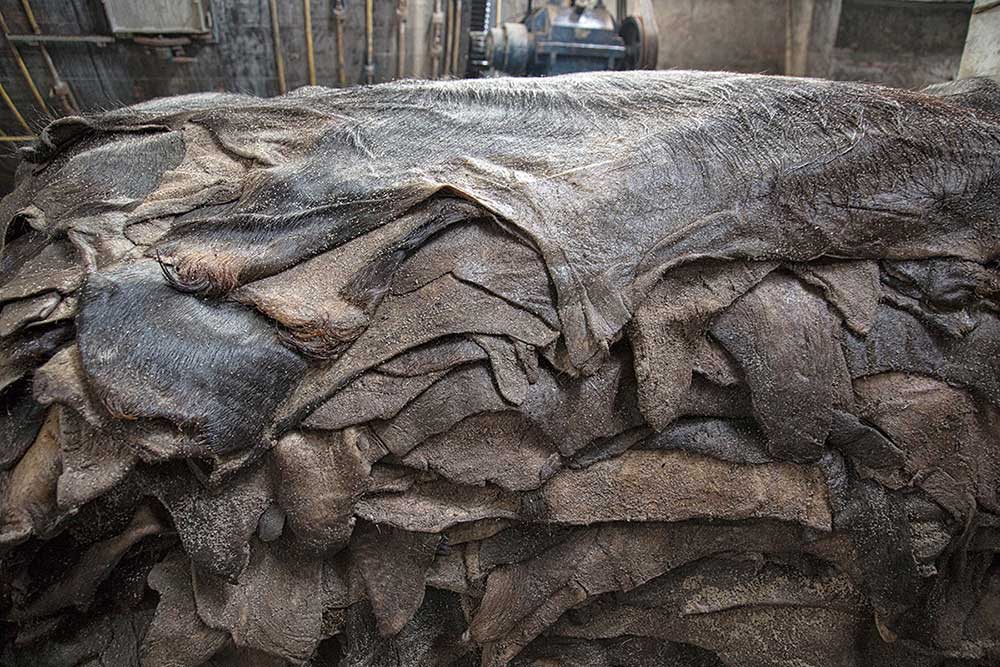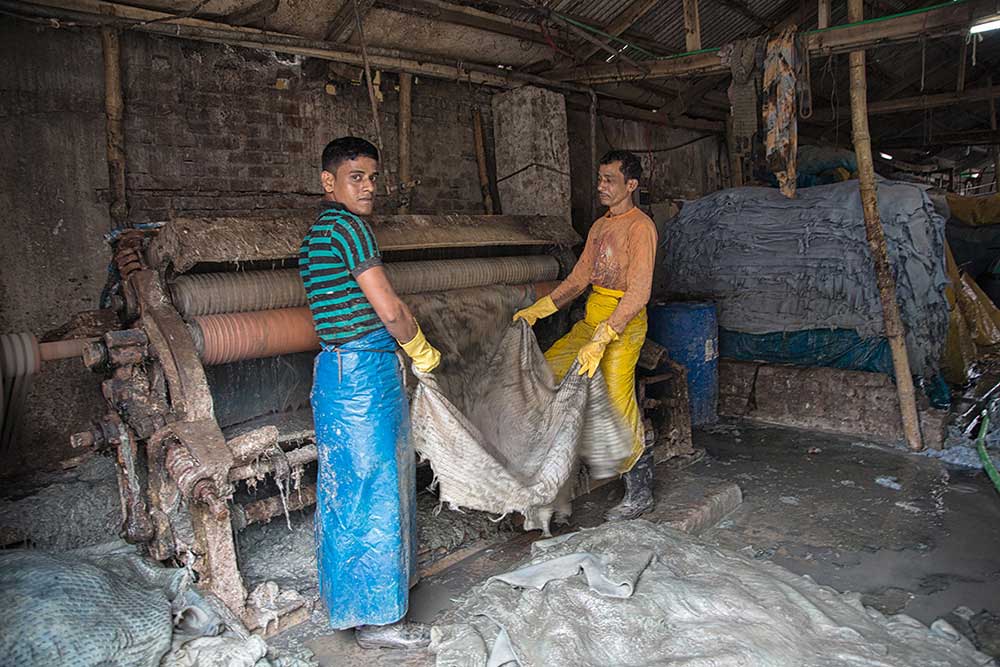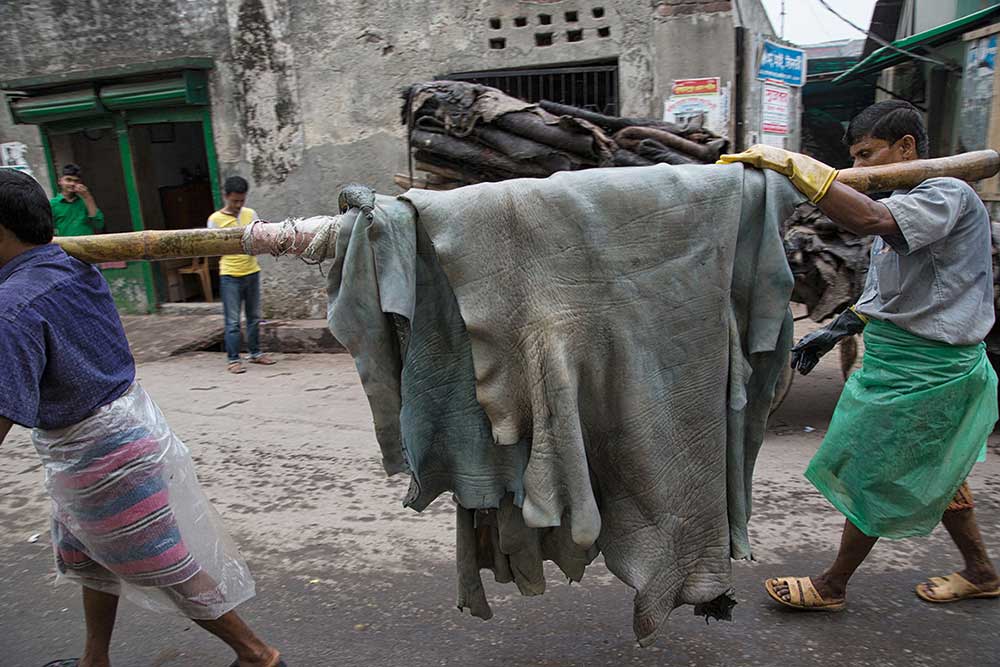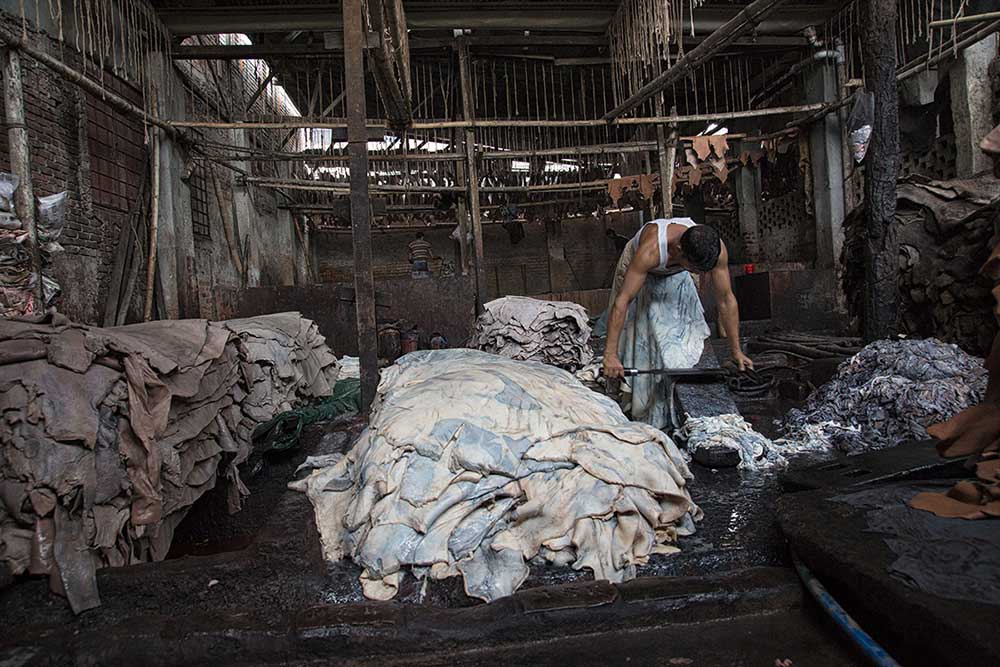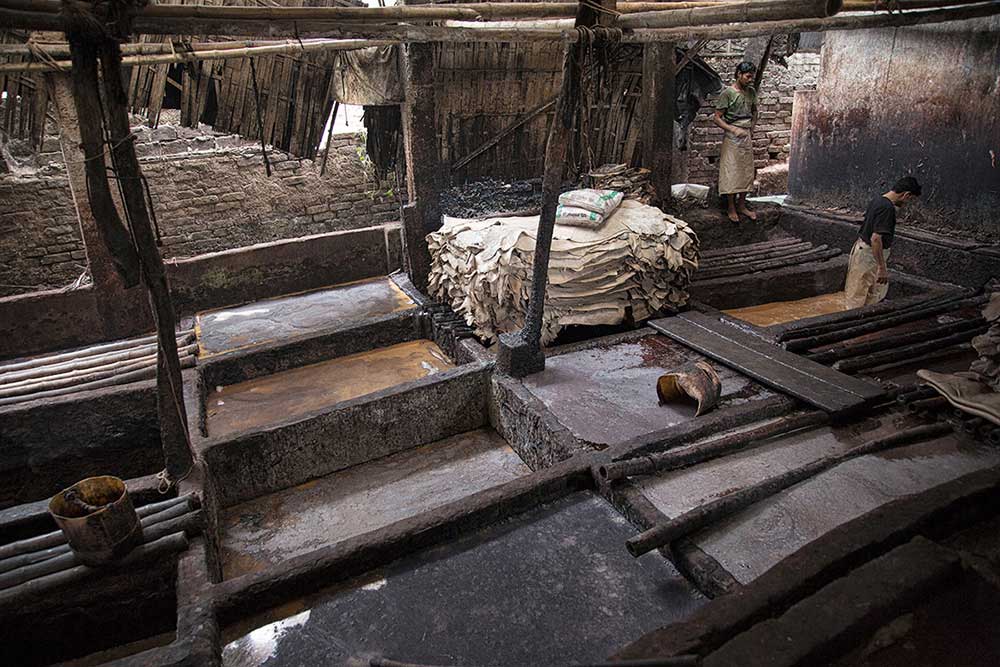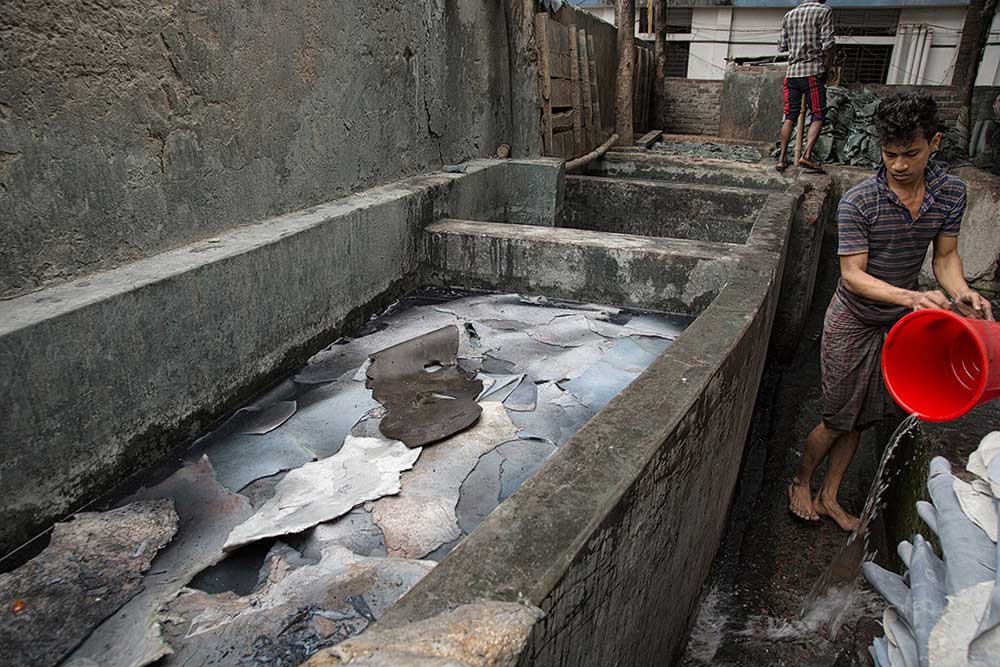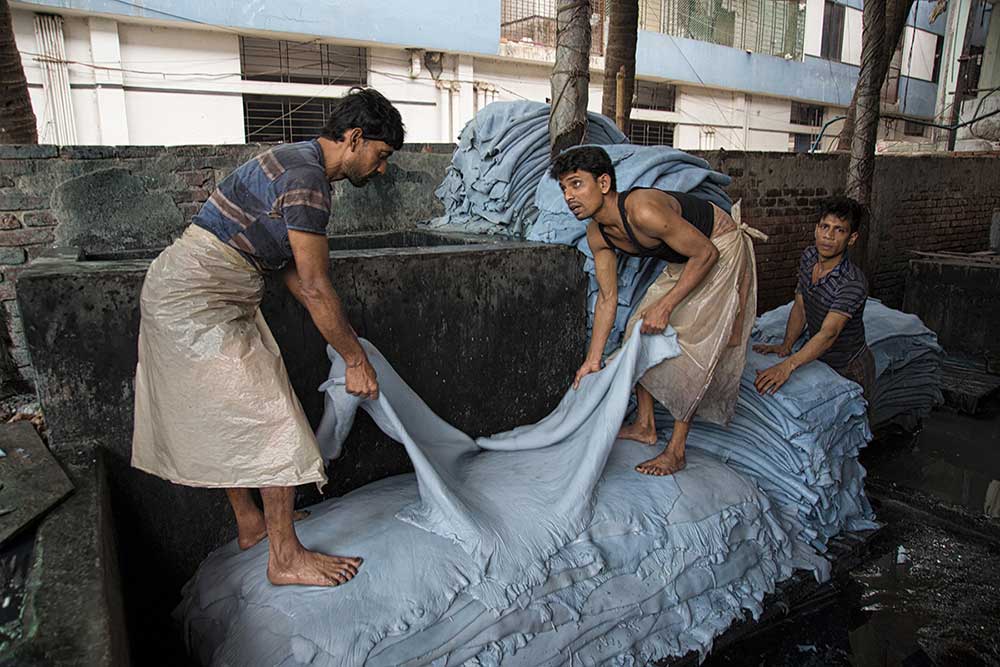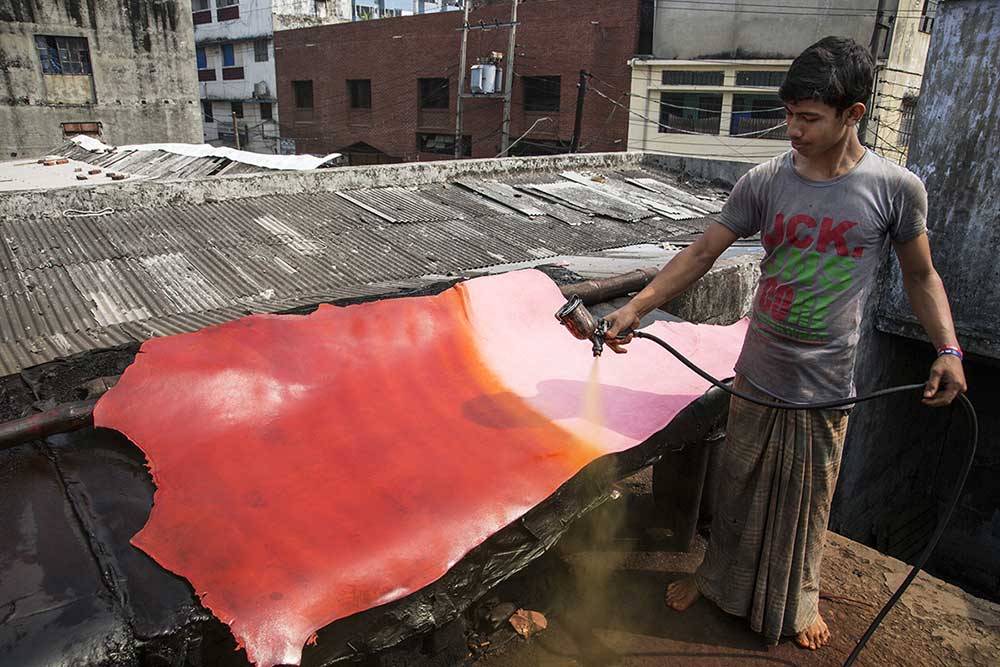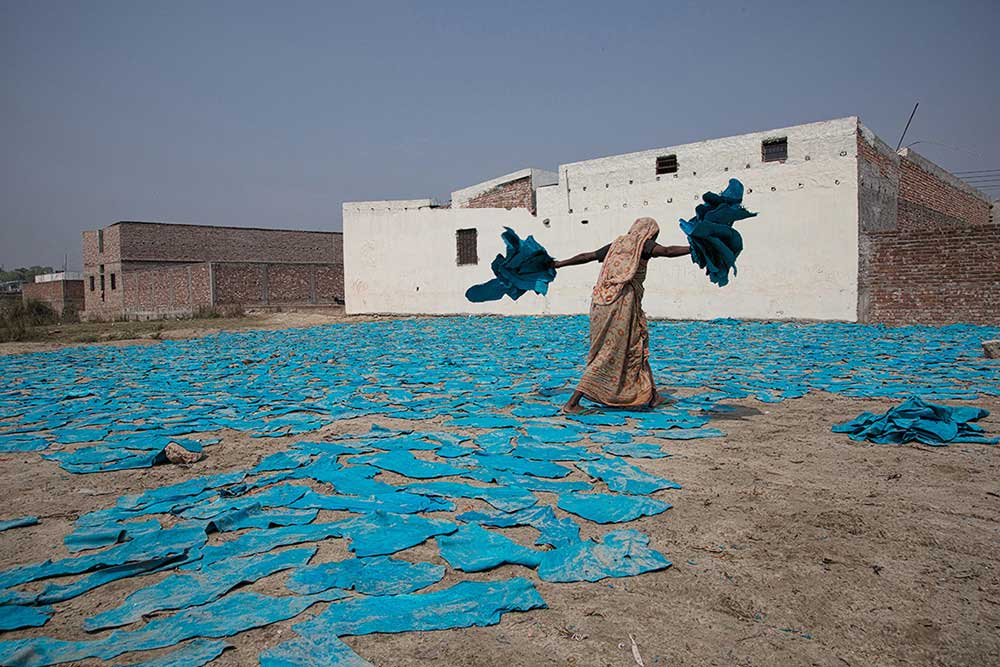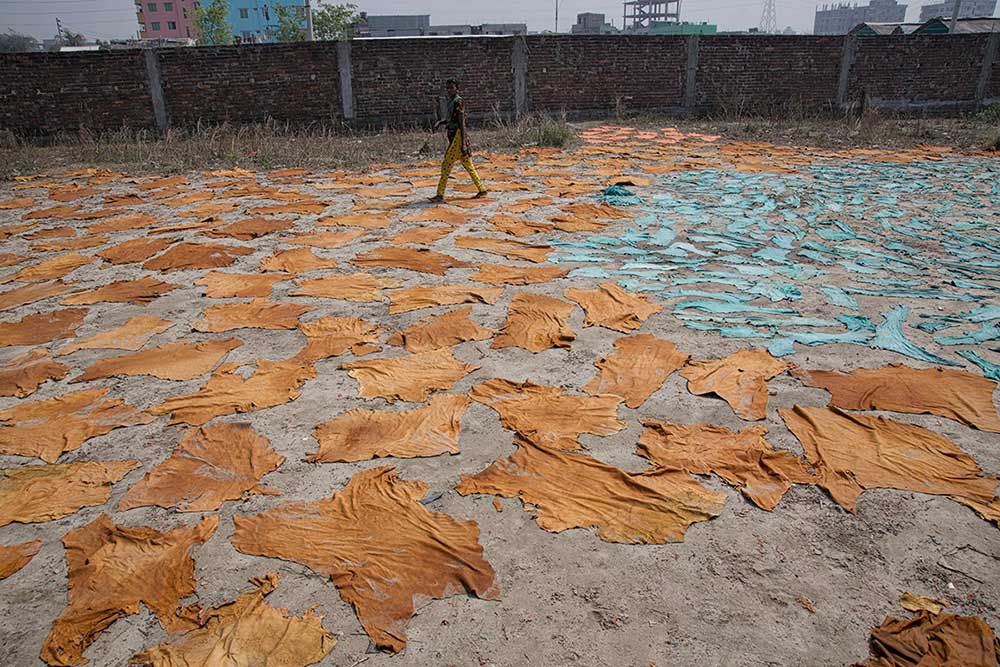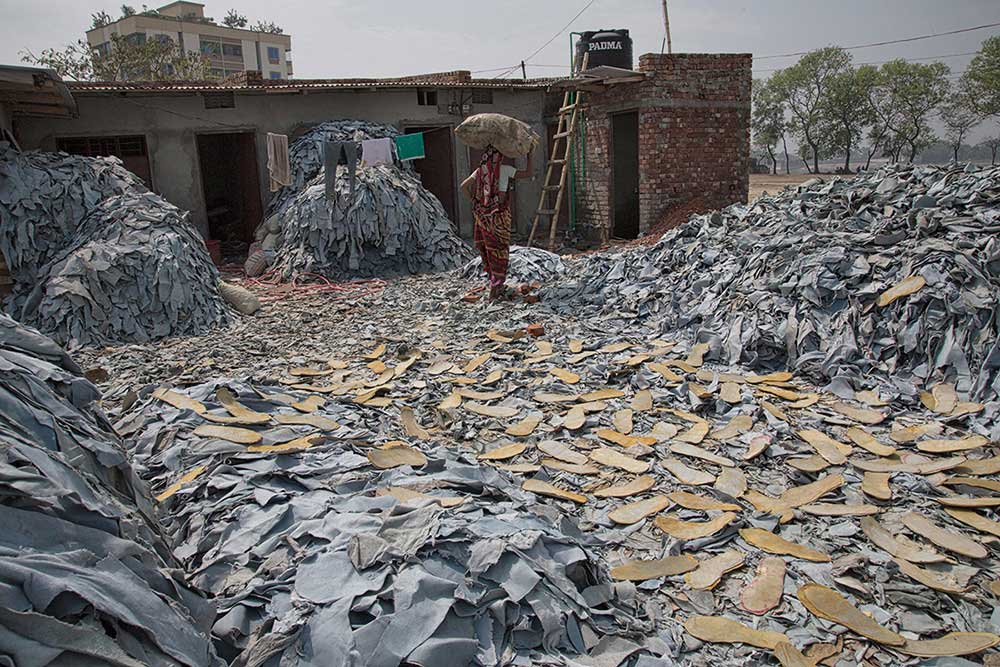Leather industry is one of the major in Bangladesh and it’s considerated a priority sector, with worldwide export.
In last decade a lot of big, famous, brands, decentralized here the creations of their products with subcontracts, finding cheapest manpower for more profit. Most of leather used for soles, belts, wallet or bags, all objects that western people use daily, come from here. Especially from Hazaribagh, a neighborhood of Dhaka: one of the world’s dirtiest manufacturing sites with garbage, rotting animal hides and toxic chemicals used for the several treatment of the leather.
But in which places are created these pieces of leather, which are the single phases of production and which are the human conditions of this job? This reportage shows an unsual vision inside this world, where the human work is again essential, but also where the industry exposes workers and children to toxic hazard, without protective gear in facilities dark and suffocating. The Bangladeshi government has acknowledged that 21,000 cubic meters of untreated tannery wastewater is dumped every day into the Buriganga River that runs through Dhaka, one of the world’s most densely populated cities. The workers in the tanneries are exposed to levels of chemicals, chromium and others that are not acceptable and are avoidable.Lung disease, mainly asthma, bronchitis, lung cancer, urine bladder cancer, reproductive tract infection, and also other diseases like stomach discomfort or gastroenteritis.
About Erberto Zani
Erberto Zani is an italian freelance photographer, journalist and photo books designer, based in Basel – Switzerland since 2016. Since 1998 to 2004 he worked as photographer in advertisement sector. Journalist and photographer for the newspaper Gazzetta di Parma (2004-2007) and editor in chief for several italian magazines, he works as freelance since 2008. Most of his works are focused on documentary-humanitarian themes. He create photographs and editorial projects for companies, magazines and No Profit Organizations. Member of Italian Order of Journalist since 2007, he cooperates also with REX Features Agency, 2015 – until today. [Official Website]



